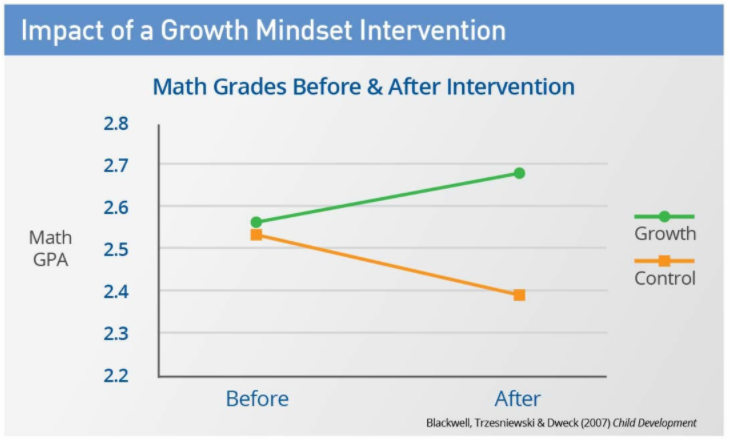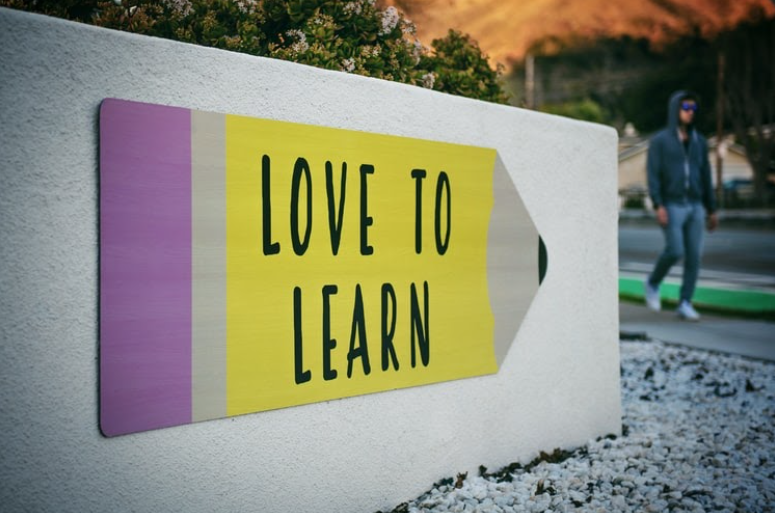Growth Mindset Activities for High School Students
High school is all about getting your students equipped with the tools they need to succeed in life and their careers after high school. How students learn and utilize the skills you teach them depends largely on their attitude toward their abilities.
In her groundbreaking research book, “Mindset: The New Psychology of Success,” psychologist Carol S. Dweck came up with the term growth mindset to describe an attitude present in students who realize that they can always improve on their skills with hard work. Dweck’s theory took root in education.
Teachers across the globe are looking for innovative and engaging ways to implement growth mindset activities in high school.
For that reason, we have prepared an ultimate guide on growth mindset for you—what it means, why it matters, and how to incorporate it into your classroom activities.
What Is the Growth Mindset Theory?

Credit: Priscilla Du Preez
The growth mindset theory in education has to do with your students’ attitudes toward failure and their motivation to learn and improve their abilities. In broad terms, the theory differentiates between growth and fixed mindsets.
When a student has a growth mindset, they know that they can always improve their skills with learning and practice. Alternatively, when a student holds a fixed mindset, they see their skills as something finite.
Some students can have a predisposition to developing either of the two mindset categories. In reality, though, it’s much more frequent that a student shifts between the two. Your student can get a low grade in an exam and focus on the failure alone one day. The next day, they can get excited about a particular assignment, put in the effort, and enjoy the process of learning.
By employing growth mindset activities in your classroom regularly, you make sure your students:
- Learn to recognize and alter the belief system that holds them back from improving
- Change the negative thoughts they have about their abilities into positive ones
Here are the growth and fixed mindsets in a nutshell:
| Students With a Growth Mindset | Students With a Fixed Mindset |
|
|
Why Is Teaching a Growth Mindset Essential?
Students with a growth mindset have an advantage over their peers who have a fixed one.
Many students learned to develop a fixed mindset when they were growing up. If they don’t change and develop a growth mindset in high school, they likely won’t be successful in college. They are prone to criticizing themselves when they can’t do an assignment or understand a complicated process. This brings the kind of embedded negativity that demotivates them from making the required effort. Students with a fixed mindset generally don’t have a positive outlook on learning and school.
By encouraging your students to develop a growth mindset, you help them grow into able and confident individuals. Students with growth mindsets are prepared to take on any challenges and choose a career for themselves. They are also willing to gain experiences—for instance, an internship—they need to succeed in their chosen careers.
In the classroom, students who have a growth mindset are:
- Prone to self-reflection
- Motivated to complete assignments
- Able to learn independently
- Willing to ask for help when they can’t find a solution themselves
- Unafraid of making mistakes
Do Growth Mindset Activities in the Classroom Work?
If you have doubts regarding the efficiency of growth mindset activities in the classroom, feel free to dispel them. Committing to teaching a growth mindset through activities, you reshape your students’ underlying beliefs toward learning and improvement.
The study that Dweck did with her colleagues proved that the students who learned that intelligence was changeable showed significant improvement in their Math lessons. The control group—shown in orange below—had lower grades in Math, and the growth group—shown in green—improved their Math grades after the study.
The Impact of a Growth Mindset Intervention


Credit: Mindset Works
Teaching students to believe in improving themselves—and changing their intelligence—through activities can also be called a growth mindset intervention. A review of various studies on a growth mindset intervention in the classroom shows that reshaping your students’ belief systems works.
Employing Growth Mindset Activities in High School

Credit: Tim Mossholder
The growth mindset theory supports praising students’ work rather than their results. This means that you need to encourage your students to feel good about the process of learning itself. You can accomplish this by incorporating growth mindset activities in your lessons consistently.
Here are some ideas for the activities you can use in your classroom:
- Devote a lesson on teaching the growth mindset theory
- Let students explore different thinking patterns characteristic of the two mindsets
- Tell your students to keep an attitude journal
- Encourage your students to open up about their negative thoughts
- Have students review their journals
- Make sure your students learn from their mistakes
- Strengthen the motivation for learning
- Have students make growth mindset posters
- Assign a growth mindset project
Teaching the Growth Mindset Theory
The best way to have your students change their perceptions of their abilities is to tell them about the growth mindset first. Devote a lesson to teaching students that their intelligence isn’t fixed but can evolve through learning and experience.
When you introduce your students to the theory of growth and fixed mindsets, allow them to make connections between the theory and their own lives. Ask them whether they could read or write when they were born. Did they know how to speak, or did they learn it by practicing consistently?
Having your students reflect on how they learned everything they can do now at some point in their lives could sober them up to the fact that nothing is impossible to achieve.
At the end of the lesson, explain to your students that, from now on, you are all going to work actively toward developing a growth mindset school culture.
As homework, your students can explore the growth mindset by doing the following assignments:
- Name five skills you learned in the last several years
- Pick one learning experience in your life and describe it in several sentences
- Write what you think of the growth mindset and how it can help you
- Name a skill you would like to have or improve on
- Explain how possessing this skill enriches your life
Naming Differences Between Growth and Fixed Mindsets
To encourage students to nurture a growth mindset, you need to remind them of it constantly. Following your lesson on the growth mindset, assign an activity for which your students need to explore the differences between growth and fixed mindsets. Here’s how you can do it:
- Divide students into growth mindset and fixed mindset groups
- Tell them to put themselves in the shoes of a person who has a growth or fixed mindset, according to the group they’re in
- Have students write down five sentences that exemplify the growth and fixed mindset thought patterns
- Let student groups exchange their sentences and write down five more thoughts from the opposite group
- Have students read the sentences they’ve written, discuss them together as a class, and ask your students whether they can relate to any of the thoughts
Keeping a Thought Journal
In line with the activity your students did in class, they can begin to pay attention to their own thinking patterns. Assign homework for which they have to write down what they’re going through in a thought journal.
Tell your students you will be the only one who gets to read their thoughts, so they won’t be embarrassed in front of their peers. If they don’t have time, students can jot down a single thought per day. Instruct them that these thoughts should reflect their attitude toward:
- Attending classes
- Doing homework
- Working on a project
- Developing a skill
- Their individual abilities
Recognizing Thought Patterns
Besides having students keep a thought journal, you should also encourage them to share their thoughts with the class. Your students can’t nurture a growth mindset if they don’t pay attention to how they are feeling. Before starting a lesson on any given day, ask your students to tell you how they feel about learning a new concept.
Make sure you create a safe classroom environment in which your students can express anything they’re thinking. Answers like “I would rather go home and sleep” or “I still don’t get that thing we learned two weeks ago” are more than welcome.
When your students open up, instruct them to think differently about learning a new skill. Remind them that changing their thoughts actively will go a long way in developing a growth mindset.
Reviewing Thought Journals

Credit: Thought Catalog
When several weeks of nurturing a growth mindset culture in your classroom have passed, have your students review their thought journals. They should identify whether some of their attitudes toward learning have changed.
Tell your students to notice a pattern in their thoughts and emotions. For example, if there were days when they felt particularly sad or anxious, they can track down a reason why that was the case. Maybe they had more work to do and were generally tired and didn’t get enough sleep.
Your students should also look for the cause behind the thoughts and emotions they experience frequently. If there is a particular subject in school that gives your students a headache, they should be aware of that. They can then set a goal in their thought journal to try to change their attitude toward that subject. For every negative thought they have, they can write the positive alternative next to it and, in that way, shift their attitude over time.
This activity teaches your students that their perception of learning and their abilities matter greatly. It also demonstrates that they are the ones who have to take control of their improvement.
Learning From Mistakes
A growth mindset classroom is a classroom in which mistakes are welcomed and encouraged. Too many times, your students will shy away from an activity or raising a hand because they believe their contribution would be futile or their answers wrong.
Your students might know that they can only learn from making mistakes, but they need to be able to apply this knowledge by participating in their classroom activities. You can also make errors yourself in front of your students to show them how mistakes are only the steps toward improvement.
Show your students how they can deal with their frustration when they make a mistake. You can hang a poster in your classroom that displays positive and negative attitudes toward mistakes. It could look like a table below:
| I Made a Mistake And I… | I Made a Mistake And I… |
| …am beating myself up about it | …know the right answer now |
| …will give up on trying | …will reflect on my mistake to improve further |
| …will never get this right | …will do great next time because I know better now |
The left column could be black and white, while the right column could be colorful. You can also have an activity for which students will work on making the table themselves. They will reflect on their attitude toward making mistakes and learn the importance of changing them into positive ones.
Boosting Motivation
If you want to motivate your students to nurture a growth mindset actively, you must teach them the importance of a positive attitude toward learning.
You can have a lesson in which you explore with your students how the growth mindset impacts all areas of their lives—in high school and later. Your students must know that wanting to improve results in developing skills they will always need. You should also incorporate soft skills activities for high school students into your lessons. Emphasize the need for these skills in any future career your students want to pursue.
When they know why they need to track their thoughts and change them into positive ones, your students will be more motivated to work on the activities.
Making a Poster

Credit: Charlie Firth
If you are teaching a subject related to IT, this is the perfect opportunity to have your students design a growth mindset poster using software. Of course, the activity can also be done traditionally in an arts and crafts class.
Your students can work on posters you will hang in your classroom or the school halls. They can write their original thoughts, copy inspirational messages from the internet, or dig up growth mindset quotes to put on a poster. You can also give them a set of quotes and assign your students to research where the quotes come from for homework.
An alternative to designing a poster is having a growth mindset bulletin board in your classroom. Your students can pin positive messages on it and change them as weeks go by. They can also pin negative messages if they’re going through a rough patch and have their peers write positive alternatives below them. This way, everyone works toward nurturing a growth mindset and transforming the school culture for the better.
Working on a Bigger Project
If a few months have passed since you introduced the practice of growth mindset to your classes, your students should reflect on their progress on a larger scale. Assign a writing project that consists of three parts:
- Growth mindset questions—your students can start by answering growth mindset questions. It will help them identify the areas for improvement, as well as the hurdles they have already overcome in their path toward developing a growth mindset
- Why I can do this—this Understood activity helps your students reflect on a specific challenge they’re facing. They can do it multiple times for every obstacle they’re dealing with, such as learning a skill or completing a particular school assignment
- Growth mindset action plan—whenever your students experience a setback, they can use this growth mindset action plan to deal with it efficiently. The nine questions help your students analyze the setback and explore how they can move on rather than blame themselves for their mistakes
Your students can work on this activity over several days—or weeks, if they want to—to see how far they’ve come with transforming their mindsets.
Let’s Create a Growth Mindset Culture Together
Dale Carnegie wrote that “most of the important things in the world have been accomplished by people who have kept on trying when there seemed no hope at all.” Here’s an example of a quote you can inspire your students with, but you can learn from it too.
It can be challenging to incorporate growth mindset activities in your classroom consistently when you are already dealing with your teacher workload. For your own sake and that of your students, you need to build a positive mindset toward growth. Not a single one of your students should be held back by underlying beliefs that they cannot do better.
We believe that the most important step toward shaping school culture that it’s positive and equitable for all is collaboration. To that end, we invite you to share your ideas with us on how you think a growth mindset can be incorporated into schools across the country. We’ll find a place for your ideas on our blog.
Let’s join forces and rethink education!

